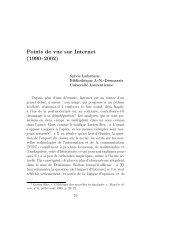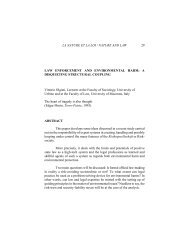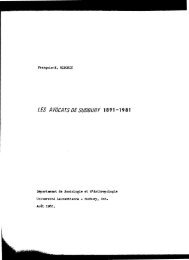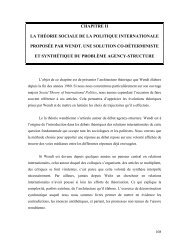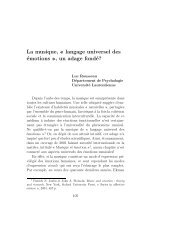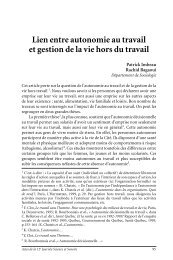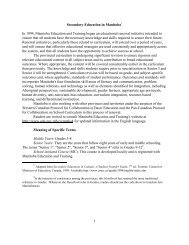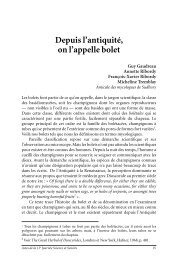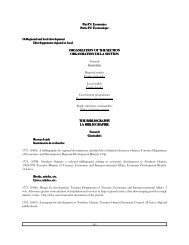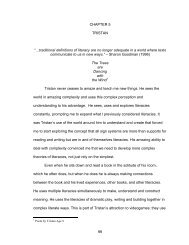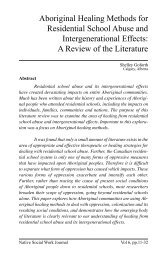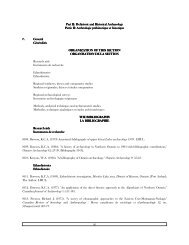NSERC grants at Laurentian University Subventions du CRSNG `a l ...
NSERC grants at Laurentian University Subventions du CRSNG `a l ...
NSERC grants at Laurentian University Subventions du CRSNG `a l ...
- No tags were found...
You also want an ePaper? Increase the reach of your titles
YUMPU automatically turns print PDFs into web optimized ePapers that Google loves.
85Elizabeth TurnerProterozoic and early Paleozoic carbon<strong>at</strong>e sedimentology:Influence of Earth system evolution on depositional systemsA grant of $25,300 per year.Une subvention de 25 300 $ par année.Discovery Grant – Subvention à la découverteThe fossil and geochemical records contained in carbon<strong>at</strong>e sedimentaryrocks (limestone and dolostone) represent the single most important repositoryof inform<strong>at</strong>ion about biological and chemical evolution of the Earth’ssurface. Earth’s earliest <strong>at</strong>mosphere was oxygen-free, and accumul<strong>at</strong>ed oxygenslowly over about 3 billion years (66% of earth’s total lifespan to d<strong>at</strong>e).Significant levels of oxygen in the <strong>at</strong>mosphere, and the protecting ozonelayer th<strong>at</strong> accompanies it, permitted multicellular and terrestrial life-formsto emerge eventually. Earth’s earliest biota was limited to single-celled organisms,many of which prolifer<strong>at</strong>ed and pro<strong>du</strong>ced oxygen by photosynthesis inshallow, tropical w<strong>at</strong>er where carbon<strong>at</strong>e sediment accumul<strong>at</strong>ed. The initialemergence of more complex organisms (such as plants and animals) is documentedin 1.2 billion year old carbon<strong>at</strong>e rocks, and their popul<strong>at</strong>ion of mostmarine niches was complete by about 475 million years ago. Many significantgaps remain in our collective understanding of this 3-billion-year-long seriesof events. By studying carbon<strong>at</strong>e systems of Proterozoic age (544 to 2500million years old), this project will address two of these salient issues:1. when and how carbon<strong>at</strong>e sedimentary environments changed from settingsth<strong>at</strong> reflect geochemically challenged conditions of the early Earthto those we consider biologically and sedimentologically ‘modern’; and2. how this affected biotic evolution.In addition to contributing to ongoing research into early earth systems, thisproject will also augment the understanding of Mesoproterozoic sedimenthostedore deposits in the Arctic, inform<strong>at</strong>ion which is needed to supportthe long-term economic development of Canada’s north. Field loc<strong>at</strong>ions willinclude Proterozoic basins exposed in the Arctic and Paleozoic rocks exposedin Newfoundland and the Canadian Rocky Mountains.




